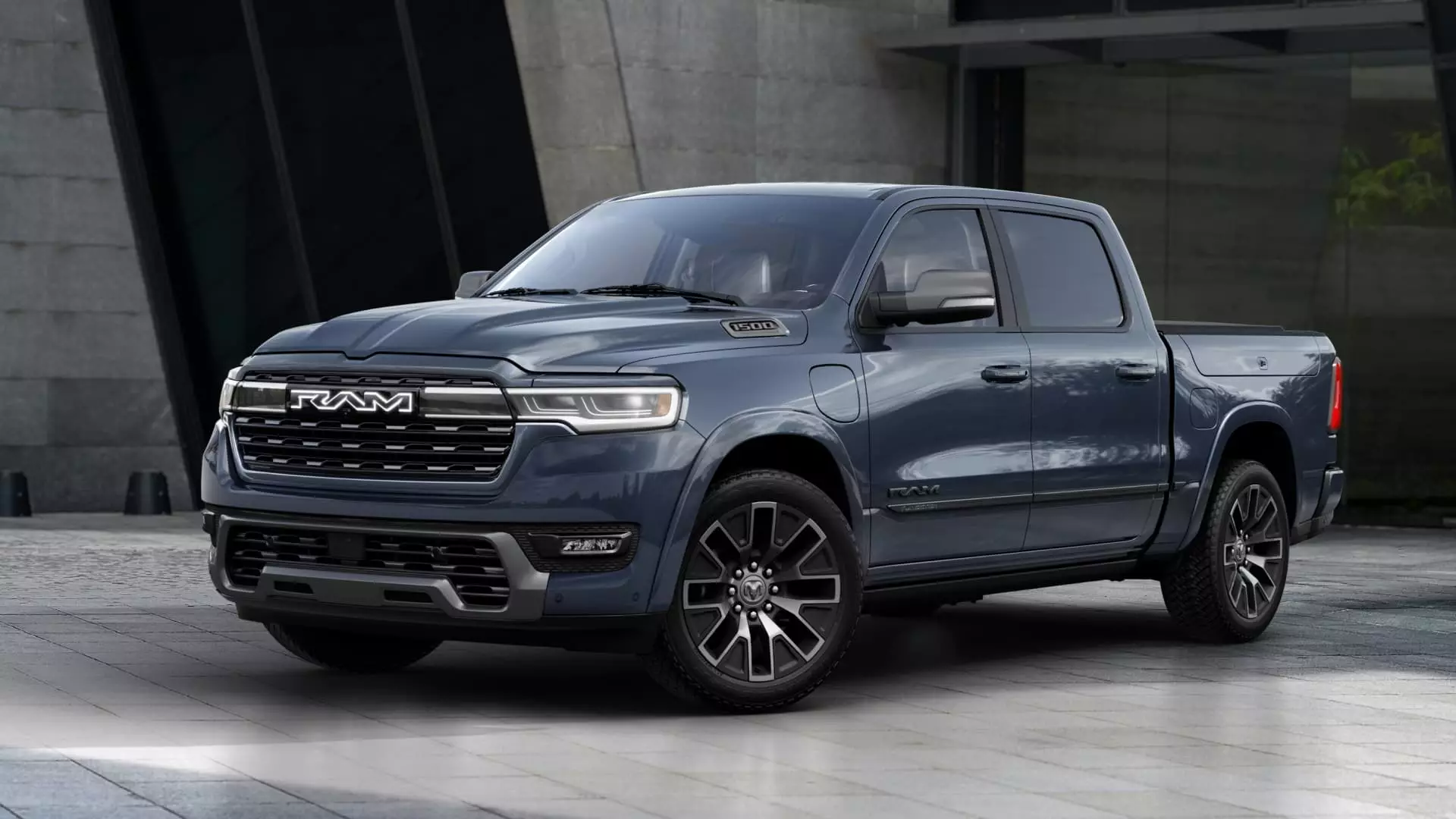In a strategic move reflecting the shifting landscape of the automotive market, Stellantis announced a postponement of the all-electric Ram pickup, initially slated for a 2025 release, now pushed to 2026. This decision highlights the automaker’s ongoing challenge in navigating the slower-than-anticipated adoption of electric vehicles (EVs), which is compounded by competitors’ struggles to achieve profitability in the electric truck segment. Such delays and challenges raise questions about Stellantis’s adaptability in a rapidly changing environment.
Instead of the fully battery-electric model, Stellantis is redirecting its resources to prioritize an innovative solution: the Ramcharger. This vehicle combines a gas engine with electric technology, presenting an extended-range electric vehicle (EREV) that bridges the gap for consumers hesitant to fully leap into the all-electric realm. According to Ram, the overwhelming consumer interest in this hybrid approach underlines a cautious enthusiasm for EV technology, while also addressing current market conditions. Ramcharger is positioned to open for customer orders in the first half of 2025, ultimately preceding the launch of the Ram 1500 REV in 2026.
The recent management changes within Stellantis, most notably marked by the return of Ram CEO Tim Kuniskis, signal a notable shift in leadership perspective. Kuniskis returned to the helm amid a significant sales decline for the brand, which plummeted by 24% by the close of the third quarter. The new CEO has made it clear that a transformative approach is necessary to revitalize the brand. He acknowledges the impact of delays in introducing the redesigned Ram 1500 and upcoming heavy-duty models as critical factors contributing to the brand’s struggles. His return suggests an intention to implement decisive changes aimed at restoring consumer confidence and competitiveness.
Described by Kuniskis as the “Goldilocks truck,” the Ramcharger is crafted to offer a balanced approach that meets consumer demand for power, range, and capability. Operating as a zero-emissions vehicle until the battery is depleted, its architecture allows a 3.6-liter V6 engine to activate an onboard generator, extending the vehicle’s range significantly—up to 690 miles when combining the electric and gas functionalities. With a fully charged 92-kilowatt-hour battery, this model addresses concerns about range anxiety while catering to a transitionary consumer base that may not yet be ready to embrace fully electric options.
As Stellantis navigates the evolving automotive landscape, the introduction of the Ramcharger represents a cautious yet strategic step toward electrification. By balancing traditional gas-powered capabilities with electric technology, the brand aims to satisfy current consumer sentiments while preparing for a future dominated by electric vehicles. The postponement of the all-electric Ram pickup might seem like a setback, but it may also serve as a pivotal point for Stellantis to reassess its trajectory in a competitive market where adaptability will be key to survival and success.

Leave a Reply